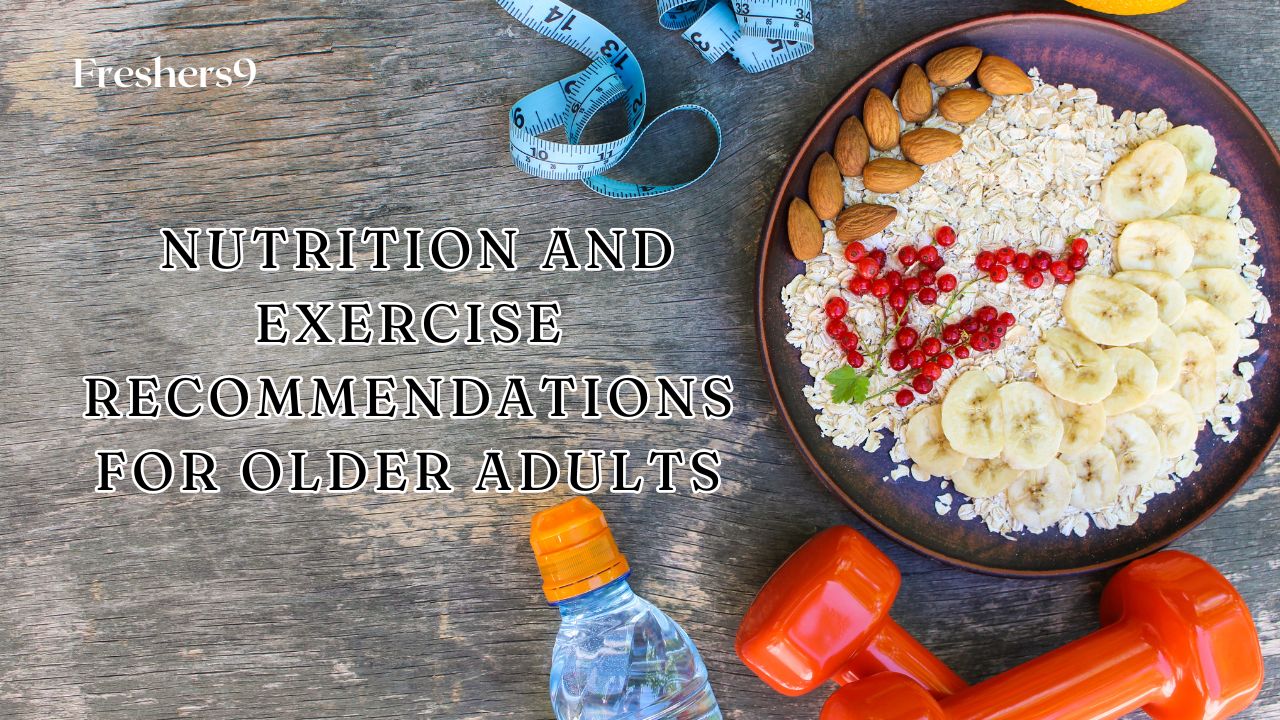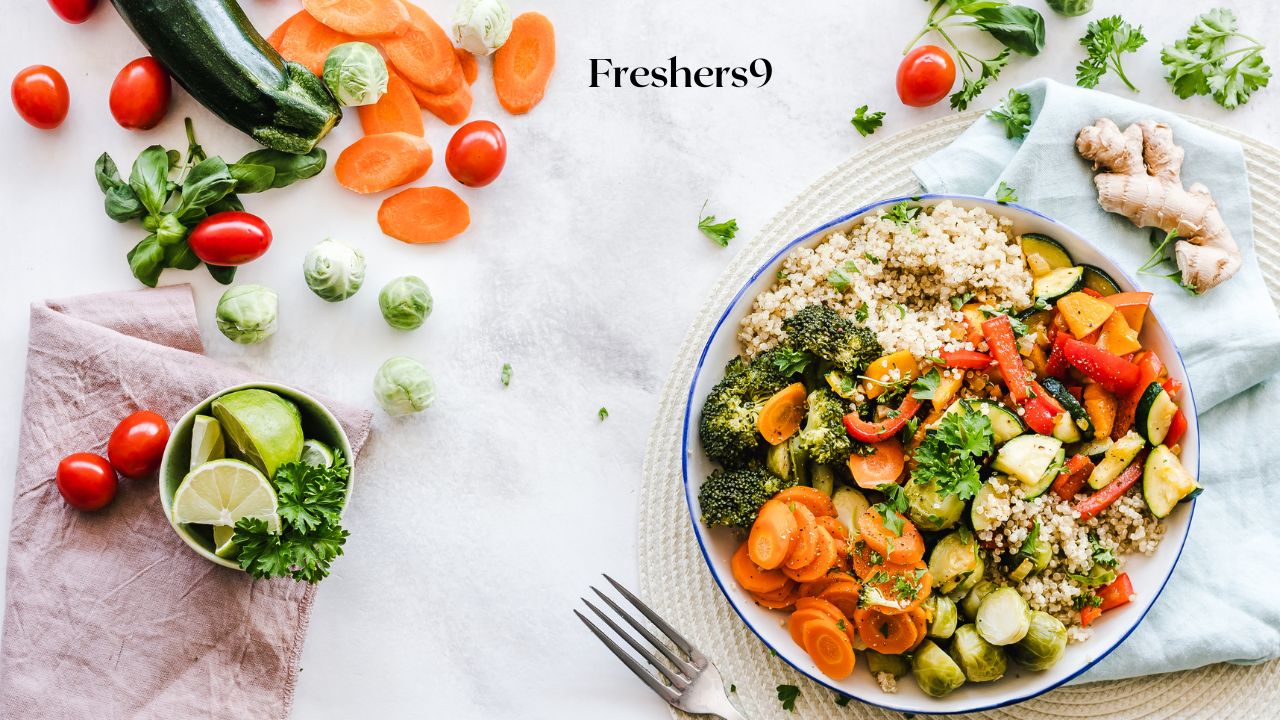Healthy Aging: Nutrition and Exercise Recommendations for Older Adults
Ageing is a natural part of life, bringing with it a unique set of challenges and opportunities. As we grow older, maintaining a healthy lifestyle becomes increasingly important to ensure we can enjoy our golden years to the fullest. Two critical components of healthy ageing are nutrition and exercise. Together, they play a vital role in maintaining physical health, mental well-being, and overall quality of life. This article will explore the best nutrition and exercise recommendations for older adults, providing a comprehensive guide to healthy ageing.
The Importance of Nutrition in Healthy Aging
Nutrient Needs for Older Adults
As we age, our bodies undergo various changes that can affect nutritional needs. Metabolism slows down, muscle mass decreases, and the body's ability to absorb certain nutrients diminishes. Therefore, older adults must pay special attention to their diet to ensure they receive the essential nutrients required for good health.
Protein: Adequate protein intake is crucial for maintaining muscle mass and strength. Older adults should aim for higher protein intake than younger individuals to counteract muscle loss. Good sources of protein include lean meats, poultry, fish, beans, lentils, tofu, and dairy products.
Calcium and Vitamin D: These nutrients are vital for bone health. As bone density decreases with age, increasing calcium and vitamin D intake can help prevent osteoporosis and fractures. Dairy products, leafy green vegetables, and fortified foods are excellent sources of calcium, while sunlight exposure and supplements can provide vitamin D.
Fiber: Fiber is essential for digestive health and can help prevent constipation, a common issue among older adults. Whole grains, fruits, vegetables, and legumes are rich in fibre and should be included in the daily diet.
Vitamin B12: Older adults are at risk of vitamin B12 deficiency due to decreased absorption. This vitamin is crucial for nerve function and red blood cell production. Foods such as meat, fish, dairy products, and fortified cereals can help meet B12 needs.
Antioxidants: Antioxidants, such as vitamins C and E, help combat oxidative stress and inflammation, which can contribute to chronic diseases. Fruits, vegetables, nuts, and seeds are excellent sources of antioxidants.

Hydration
Proper hydration is often overlooked but is essential for overall health. As we age, the sensation of thirst diminishes, increasing the risk of dehydration. Older adults should aim to drink plenty of water throughout the day, even if they do not feel thirsty. Including water-rich foods like fruits and vegetables in the diet can also help maintain hydration levels.
Balanced Diet
A balanced diet is key to healthy ageing. Older adults should focus on consuming a variety of nutrient-dense foods to meet their nutritional needs. The following tips can help achieve a balanced diet:
Eat a Rainbow of Fruits and Vegetables: Different coloured fruits and vegetables contain various vitamins, minerals, and antioxidants. Aim to include a diverse range of colours in each meal.
Choose Whole Grains: Whole grains like brown rice, quinoa, whole wheat, and oats provide more nutrients and fibre compared to refined grains. They help maintain energy levels and support digestive health.
Limit Processed Foods: Processed foods often contain high levels of salt, sugar, and unhealthy fats. Reducing consumption of these foods can help manage weight, blood pressure, and overall health.
Healthy Fats: Include sources of healthy fats, such as avocados, nuts, seeds, and olive oil. These fats are beneficial for heart health and can provide energy.
Moderation in Alcohol and Caffeine: Excessive alcohol and caffeine consumption can lead to various health issues. Older adults should consume these in moderation and be mindful of their effects on hydration and sleep.
The Role of Exercise in Healthy Aging
Regular physical activity is a cornerstone of healthy ageing. It helps maintain physical function, supports mental health, and reduces the risk of chronic diseases. The following exercise recommendations can help older adults stay active and healthy.
Types of Exercise
Aerobic Exercise: Aerobic exercises, also known as cardiovascular exercises, improve heart and lung health. Activities such as walking, swimming, cycling, and dancing are excellent options. Aim for at least 150 minutes of moderate-intensity aerobic exercise per week.
Strength Training: Strength training helps maintain muscle mass and bone density, which are crucial for mobility and independence. Exercises like lifting weights, using resistance bands, and body-weight exercises (e.g., squats, push-ups) should be included at least two days per week.
Flexibility and Balance: Flexibility exercises, such as stretching and yoga, improve the range of motion and reduce the risk of injuries. Balance exercises, such as tai chi and standing on one foot, can prevent falls, a common concern for older adults. Incorporate these exercises into the routine at least twice a week.
Functional Fitness: Functional fitness exercises mimic everyday activities and improve overall functionality. These exercises enhance the ability to perform daily tasks, such as lifting groceries, climbing stairs, and getting up from a chair. Examples include step-ups, sit-to-stand exercises, and carrying weighted objects.
Exercise Safety
Safety is paramount when engaging in physical activity, especially for older adults who may have health conditions or mobility issues. The following tips can help ensure safe exercise practices:
Consult a Healthcare Professional: Before starting a new exercise program, older adults should consult with their healthcare provider to discuss any medical conditions or limitations.
Warm-Up and Cool-Down: Begin each exercise session with a warm-up to prepare the body for physical activity and end with a cool-down to gradually return the body to a resting state. Gentle stretching and low-intensity movements are effective for both warm-up and cool-down.
Listen to the Body: Pay attention to any signs of discomfort, pain, or fatigue. It is essential to exercise within one's limits and avoid overexertion.
Stay Hydrated: Drink water before, during, and after exercise to maintain hydration levels.
Use Proper Equipment and Footwear: Ensure that exercise equipment is in good condition and appropriate for the activity. Wear comfortable, supportive footwear to prevent injuries.
Creating an Exercise Routine
Developing a consistent exercise routine can help older adults stay motivated and reap the benefits of physical activity. The following steps can guide the creation of a personalized exercise plan:
Set Realistic Goals: Establish clear, achievable goals that are specific, measurable, and time-bound. For example, aim to walk for 30 minutes five days a week or perform strength training exercises twice a week.
Choose Enjoyable Activities: Select activities that are enjoyable and aligned with personal preferences. Enjoyment increases the likelihood of sticking with the exercise routine.
Incorporate Variety: Include a mix of aerobic, strength, flexibility, and balance exercises to target different aspects of fitness and prevent boredom.
Schedule Regular Exercise Sessions: Set aside specific times for exercise and treat them as non-negotiable appointments. Consistency is key to building a sustainable routine.
Track Progress: Keep a record of exercise activities, duration, and achievements. Tracking progress can provide a sense of accomplishment and motivation to continue.
Mental and Emotional Well-Being
While nutrition and exercise are fundamental to physical health, mental and emotional well-being are equally important for healthy ageing. Older adults should engage in activities that promote cognitive health and emotional balance.
Cognitive Health
Stay Mentally Active: Engage in activities that stimulate the brain, such as reading, puzzles, playing musical instruments, and learning new skills. Lifelong learning helps keep the mind sharp and agile.
Social Engagement: Maintaining social connections can reduce the risk of cognitive decline and improve overall mental health. Participate in social activities, join clubs, volunteer, or spend time with family and friends.
Sleep: Adequate sleep is essential for cognitive function and overall health. Aim for 7-9 hours of quality sleep per night by maintaining a regular sleep schedule and creating a conducive sleep environment.
Manage Stress: Chronic stress can negatively impact cognitive health. Practice stress management techniques such as mindfulness, meditation, deep breathing exercises, and yoga.
Emotional Well-Being
Purpose and Meaning: Engaging in meaningful activities and having a sense of purpose can enhance emotional well-being. Pursue hobbies, volunteer, or set personal goals that bring fulfilment.
Positive Relationships: Foster positive relationships with family, friends, and community members. Strong social connections provide emotional support and a sense of belonging.
Mental Health Support: Seek professional help if experiencing symptoms of depression, anxiety, or other mental health issues. Mental health is a critical component of overall well-being.
Gratitude and Positivity: Practice gratitude and focus on positive aspects of life. Keeping a gratitude journal or engaging in positive affirmations can improve emotional health.

Healthy aging is an ageing-faceted process that involves maintaining physical health, mental well-being, and emotional balance. Nutrition and exercise are two fundamental pillars that support this process, helping older adults lead active, fulfilling lives. By prioritizing nutrient-dense foods, staying hydrated, engaging in regular physical activity, and nurturing mental and emotional health, older adults can enjoy a higher quality of life and continue to thrive in their golden years. Embracing these recommendations and making them a part of daily life can pave the way for a healthier, happier, and more vibrant aging journey.